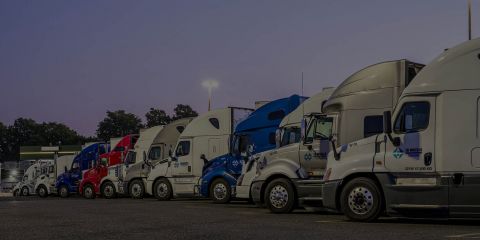
Vancouver didn’t become a logistics hub overnight. It’s taken decades of sweat, steel, and spreadsheets.
Back in the early to mid-1800s, Vancouver’s earliest warehouses were simple wooden structures servicing rail lines and sawmills. It wasn't until the completion of the Canadian Pacific Railway in 1887 that the city became a continental trade artery, with warehouses popping up near rail hubs, built for bulk storage and basic sorting.
By the mid-20th century, the port of Vancouver was fully built and booming. The city’s warehouse zones expanded south along Marine Drive and into areas like East Vancouver and Richmond. These buildings were bigger and helped set the stage for the future of warehousing in Vancouver.
Where We Are Now: Digitized, Diverse, and Demand-Driven
Modern warehousing in Vancouver is smarter, denser, and vertically integrated than ever before. Facilities now stretch into the Fraser Valley, Surrey, Delta, and Langley, where land is more available and zoning laws are more flexible.
The city’s position as Canada’s Pacific gateway has kept demand high. According to the Vancouver Economic Commission, e-commerce growth and supply chain diversification have pushed warehouse vacancy rates to record lows. Meaning every square foot is prime real estate—and it has to work harder than ever.
At the same time, customers are demanding shorter lead times and more flexible delivery options. This has led to a shift toward micro-fulfillment centers and just-in-time inventory models. Warehouses are not only storage spaces but active hubs for last-mile logistics, making proximity and technology just as important as capacity.
What’s Next: Automation, Density, and Local Resilience
The future of warehousing in Vancouver will need to balance innovation with size constraints. Space is tight. Labor is expensive. Customers expect faster delivery. So where’s it going? This is what we think:
- Multi-level industrial buildings to combat land scarcity (already rising in Burnaby and New Westminster)
- Greater use of robotics and AI for sorting, picking, and tracking
- Expansion into underdeveloped zones like Port Coquitlam and Mission
- Stronger integration between port logistics and inland warehousing
We're already adopting automation tools in our facilities to stay ahead. But tech isn’t the only story—there’s also a big focus on sustainability. Green roofs, EV fleets, and smart HVAC systems are becoming part of the warehousing blueprint.
In the long run, adaptability will be key. The facilities that thrive will be those that can shift quickly with market demands, urban growth, and environmental regulations, without missing a beat.
Final Thought: From Sawmills to Smart Warehouses
Vancouver’s warehousing story is one of resilience, reinvention, and relentless forward motion. From simple wooden sheds on the waterfront to today’s high-tech, multi-functional facilities, the city has evolved to meet the moment.
As industries shift and customer expectations grow, the need for flexible, efficient, and sustainable warehousing has never been greater. This isn’t just about storing goods anymore—it’s about staying competitive in a fast-changing world.
Based in Vancouver, British Columbia, Canada, 18 Wheels relies on experience and integrity to make customers happy and remain on the cutting edge of shipping and logistics management.
If you have any questions about this article or you would like to talk to us about your shipping needs, please call us at (604) 439-8938.
